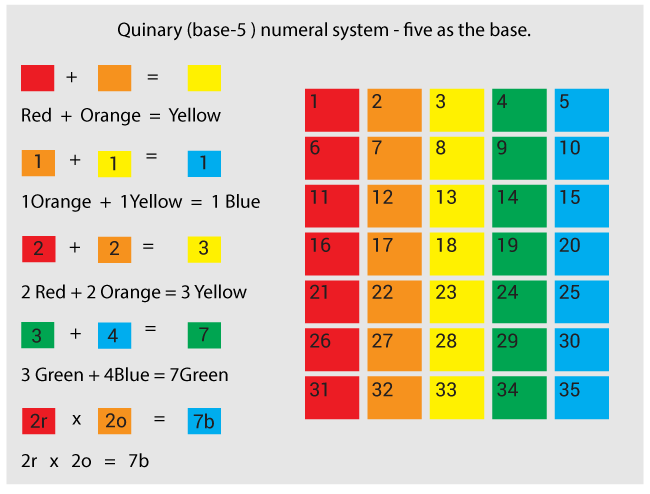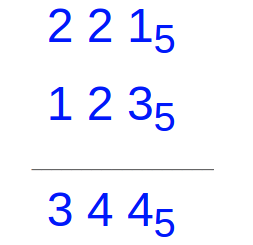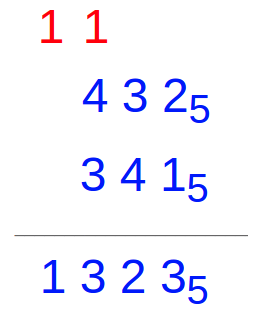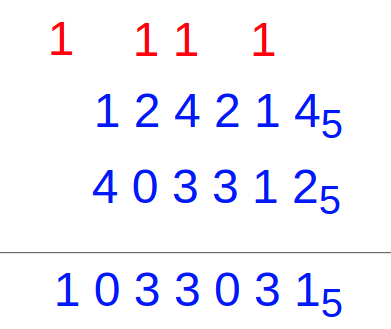Addition in Base 5
Addition in base five is similar to addition in base 10 and it is not complicated once you understand the basics.
- Base 10 uses 0, 1, 2, 3, 4, 5, 6, 7, 8, and 9
- Base 5 uses 0, 1, 2, 3, and 4

Adding in base 5:
7 + 1 = 8 = 5 + 3
The 3 is put in the place value where you are adding 7 and 1
The 5 is carried over to the next place value on the left of 7 and 1
Usually, we use 1 to represent the 5
Now, if the number is less than 5, just write it down in the same place where you are doing the addition.
For example:
If 4 and 3 are already in base 5 and you want to add them, what would you do?
4 + 3 = 7 = 5 + 2
Put 2 in the same place as 4 and 3
Carry the 5 over to the next place value on the left of 4 and 3
Again, we use 1 to represent the 5
Let’s practice now with some examples
Example 1: Addition in base five with no carry
To avoid confusion with base 10, we put a 5 next to each number
However, it is clear to you that the addition is being done in base five, there is no need to write down the 5
Add: 2215 + 1235

Notice that the addition above was easy so far.
Example 2: Addition in base five with carry
Add: 4325 + 3415

2 + 1 = 3. It is less than 5, so there is no carry. Just write 3 down
4 + 3 = 7 = 5 + 2
Write 2 down and carry a 5. However, use 1 to represent 5 just like in base 10
1 + 4 + 3 = 8 = 5 + 3
Write 3 down and carry a 1 again
The last one all the way to the left that was carried over can be brought down now.
Example 3: With carry
Add: 1242145 + 4033125

4 + 2 = 6 = 5 + 1. Put 1 down and carry 1
1 + 1 + 1 = 3. Put 3 down
2 + 3 = 5 = 5 + 0. Write 0 down and carry a 1
1 + 4 + 3 = 8 = 5 + 3. Write 3 down and carry a 1
1 + 2 + 0 = 3. Write 3 down.
1 + 4 = 5 = 5 + 0. Write 0 down and carry a 1
The last one all the way to the left that was carried over can be brought down now.